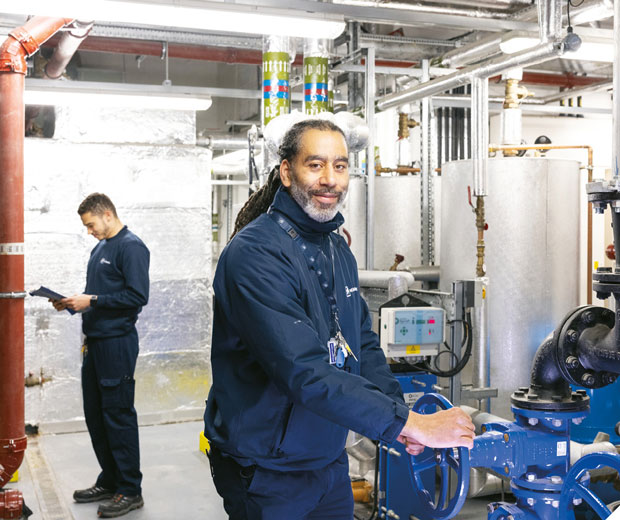 From planning to action, John Cooper, Operations Director at NG Bailey offers some proven strategies for successful M&E asset management
From planning to action, John Cooper, Operations Director at NG Bailey offers some proven strategies for successful M&E asset management
Whether you’re managing a high footfall venue or a small office building, effective maintenance of M&E assets is essential to the smooth running of any organisation.
Encompassing everything from heating and cooling to lighting, power, water and gas systems, M&E assets cover a whole spectrum of activities that keep a building’s occupants comfortable and safe, and its operations working efficiently.
However, managing M&E assets effectively can be challenging. While proper maintenance can offer ample opportunities to improve efficiencies, reduce energy consumption and enhance sustainability, the nature of M&E means this often isn’t a simple process, especially for organisations that have thousands of assets across multiple estates. It’s also important to ensure technology is deployed in a simple and effective manner and that it is there to enhance the engineer’s understanding of a fault and improve the speed of rectification.
The aim is to maintain exceptional buildings so they can continue to connect seamlessly, operate efficiently and prosper both now and in the future. Our objective is always to take on the client’s goals for their estates, whether that’s net zero, reducing energy consumption or creating an environment
that encourages more employees to come into the office. We then work towards achieving these goals so that organisations can focus on doing what they do best, whether that’s delivering the best care possible for patients in a hospital or ensuring they deliver a memorable match to thousands of fans at a football stadium.
GOING BACK TO BASICS
There is no one size fits all approach to managing M&E assets, due to the variety of buildings and their uses. However, for any venue or environment, the first step is getting to grips with the building and finding out as much as possible about it, and its assets.
This means understanding what your ultimate objective is with the space. For some organisations, such as those in financial services, this could mean ensuring that their buildings are extremely resilient and robust, preserving uptime, the time when services are online and available, the ultimate goal of any maintenance plan. With the changes to working patterns as a result of the COVID-19 pandemic, other organisations might be focused on making their workplaces more attractive places for employees to come to work and collaborate. This might mean that air quality, cleanliness, lighting and heating will need to work together in harmony to create an environment that people will want to leave their home offices for.
Alongside this is sustainability which needs to be built into any plans, as this is top of the agenda for many companies, with more than a third of the world’s largest companies now committed to a net zero target.
Once these goals have been identified, it’s vital to get under the skin of a development and look at exactly what you’re working with. This means an assessment of the number of buildings and their age, the assets within the buildings and their condition, to create a full asset register.
Only once you have that information can you build a plan that will achieve the objectives you set out at the beginning. At NG Bailey we focus on working in partnership with owners, landlords and occupiers to put the time and effort into this process upfront, to create a plan that will deliver the safest, healthiest and most sustainable environments possible, all while aligning with our client’s ultimate business goals.





